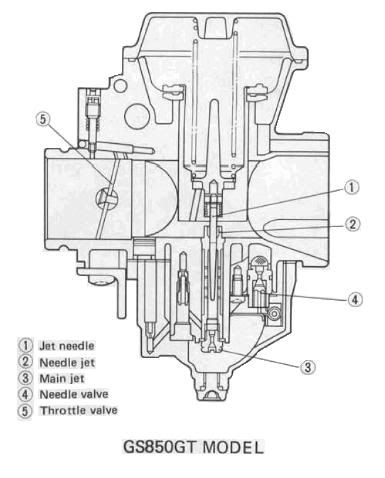If you remove the fuel pilot screw (mix) and look inside you will see a tiny hole. It has been mentioned many times here to check this hole in order to be sure the mix needle has not broken off in it. However if you look inside the throat of the carb on the engine side you will see there are 2 holes there. Blow compressed air through where the mix needle goes and ensure that both holes have air coming through them. On old carbs that sit up it is easy for the secondary hole to be plugged up.
As has been mentioned here 1 million times, do not think a can of carb cleaner or sea foam is going to clean 30yr old carbs that have sat for a long time. Tear the carbs completely down and soak em, for at least 30 hrs on the first go. Then wash the carbs in hot soapy water and blow dry with compressed air. Carb cleaner only works if the passage is not blocked, Seafoam only works if the carbs are 95% right and run pretty good on the road.
As I have learned the hard way if the bike is 30+years and original, when you rebuild the carbs just go and replace the petcock and intake boots/o'rings. Working around bad boots and a leaking petcock is more headache than it is worth.
.png)









 and the PO already did the valves (probably 20,000 miles ago) but the bike has a hard time starting cold and only run to 3/4 throttle etc. what can that be?
and the PO already did the valves (probably 20,000 miles ago) but the bike has a hard time starting cold and only run to 3/4 throttle etc. what can that be?
Comment